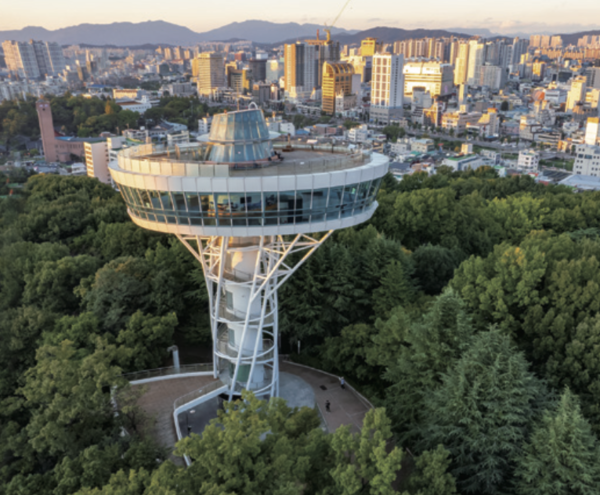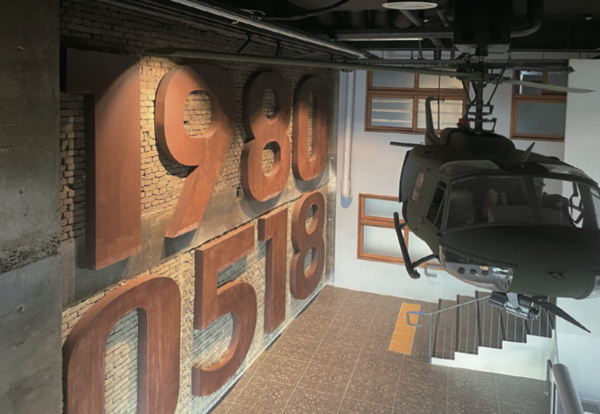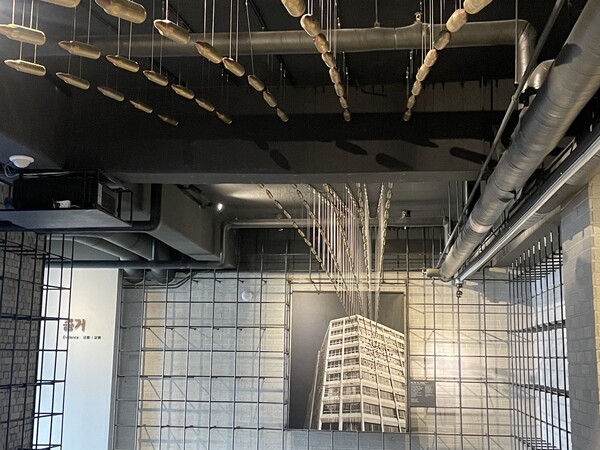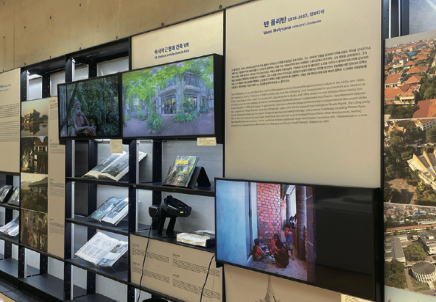The crisp air from the last cold snap of early March is yet to fade away. Nevertheless, budding flowers and blissful sunlight, as well as the buzzing atmosphere on campus, are sure to melt the hearts of Kingos. How about welcoming this new, vibrant season with a short trip? Here is an invitation from Gwangju, the southwestern city of Korea, that will welcome Kingos with its various gems. Now, open the invitation with the Sungkyun Times (SKT) to explore the iridescent lights and charms of Gwangju, awaiting to embellish the new beginnings of Kingos.
[Walk into Gwangju]
- Light Village: Bitgoeul
Gwangju, a city in South Jeolla Province, is one of the six official metropolitan cities of Korea. In the 1980s, Bitgoeul, a pure Korean word that means “Light Village,” became another name for Gwangju. For its versatility, this city of light is also known as the home of three charms. First, as the city of democracy and peace, Gwangju is the “home of righteousness,” or ui-hyang. This significance arises from the Gwangju Student Independence Movement, which inspired a nationwide resistance against Japanese colonialism, and the Gwangju Democratic Uprising of May 18th, 1980. Another name for Gwangju is ye-hyang, which translates to “home of art.” From producing many virtuosos of Korean traditional music in the past to currently hosting the Gwangju Biennale Festival every two years, the city has continuously upheld its artistic heritage. “Home of taste,” mi-hyang, is the last name of Gwangju. Five main dishes, including songjeong tteokgalbi (grilled short rib patties) and boribap (barley rice), as well as the Gwangju World Kimchi Culture Festival, prove the significance of this title. These three charms are infused in every corner of Gwangju, captivating the hearts of its visitors.

- How to Visit
To travel from the Humanities and Social Sciences Campus (HSSC), Kingos can take Line 4 at Hyehwa Station and get off at Sinyongsan Station. Leave the station at Exit 3 and take the Yongsan Station KTX to Gwangju Songjeong Station. Leave the station at Exit 4 and take Line 1 at Gwangju Songjeong Subway Station to get to Namgwangju Station. Then, leave the station at Exit 3 and walk for 15 minutes to arrive at the House of Choi Seung- hyo in Yangnim-dong. Kingos leaving from the Natural Sciences Campus (NSC) can take Line 1 at Sungkyunkwan University Station and get off at Pyeongtaek Jije Station to take the SRT. Get off at Gwangju Songjeong Station, and the rest of the route is identical to the route from the HSSC.
[From the Virtue of Righteousness: Ui-Hyang]
- Spirit of Independence at Yangnim-Dong
The first destination or Kingos is Yangnim- dong, where visitors can appreciate the brisk forest air and the beauty of Hanoks, traditional Korean houses that hold reminiscent traces of the Joseon Dynasty. Stepping the tranquil roads into Yangnim-dong, Kingos can see the House of Choi Seung-hyo. This house is a traditional Hanok built in the Japanese colonial period by an independence activist named Choi Sang-hyeon. It was later purchased by Choi Seung-hyo, whose name eventually became the title of the house. The Hanok’s rough wooden texture harmonizes with the verdant landscape, gifting its visitors a picturesque view. Seokgansu, a narrow stream of water flowing out from the rocks behind the house, creates a small pond in the front garden, completing a pristine atmosphere. Within this ethereal view, Kingos must also recognize the historical value of this house. During Japanese Imperialism, this house confidentially financed independence movements and even hid fleeing activists in its basement. Thus, other than appreciating its serene view of nature, Kingos can contemplate the strength of the resilience of Gwangju that arose despite the suppression of colonialism.

- 245 Bullet Holes, 245 Stories
Taking the Geumnam 55 bus for about five minutes from Yangnim-dong will take Kingos to Jeonil Building 245, the site of the Gwangju Uprising of 1980. This building was renovated as an exhibition building to commemorate the fight for democracy in this nation after the National Forensic Service identified 245 bullet holes on its walls that prove the helicopter shootings by the military. Welcoming its guests from 10 a.m. to 7 p.m., Jeonil Building 245 has a specific order of the exhibition that guides the visitors to walk in a unique descending order from the 10th floor to the first floor. Therefore, the SKT recommends that Kingos first visit the rooftop garden called Jeonil Maru to view the entire landscape of Geumnam-ro in a single view. Then, the 10th floor guides Kingos to the building’s main exhibit, 19800518, with installation art pieces titled Black Sky that Day and Bullets of Democracy that restore the tragic memory from 44 years ago. This building also screens a short, animated documentary with actual testimonies that share the incident of a tragic helicopter shooting that was targeted toward the citizens, memorializing the history that cannot be distorted or forgotten. Furthermore, on the third floor, an exhibit titled 5.18 and the Press reports the history of governmental suppression of the freedom of the press during the uprising. Lastly, in the basement, a coffee shop called 245 Salon recreates the atmosphere of the 1980s and offers a cozy resting place for its visitors. The SKT encourages Kingos to take a seat on the retro couch and reminisce about the values of resilience, justice, and freedom that this city upholds.


[To Its Thriving Artistry: Ye-Hyang]
- Hub of Asian Art
After appreciating Gwangju as the home of righteousness, it is now time to venture into the city as the home of art. This next journey begins at the Asian Culture Center (ACC), which preserves the tradition, manifests the present, and foreshadows the revolutionary future of Asian art and culture. Not only does the ACC capture the artistic beauty of Gwangju, but it also encompasses the entirety of Asia, functioning as the home of Asian art. The exhibition that Kingos must visit is the permanent exhibition, which showcases art pieces that explore the historical, social, and political contexts of Asian countries. The ACC surpasses the conventional style of one-dimensional exhibitions and provides a dynamic experience through virtual reality (VR) that allows visitors to experience non-tangible cultural heritage items realistically. After appreciating the sophisticatedly planned exhibitions inside the building, the SKT invites Kingos to take a breath of fresh air in the Sky Garden outside the museum. The Sky Garden is an outdoor area of the ACC that welcomes visitors to enjoy a short stroll while taking pictures with the golden reeds and the iridescent lighting as the background. Having a picnic on the green grass field under the clear blue sky is another way to enjoy the ACC to the fullest.


- A Roadmap of Follies
Now is the time to leave the planned exhibitions of museums and begin to appreciate the daily charms of Gwangju through a folly tour. The original definition of a folly is a piece of architecture that merely serves as a decorative sculpture after losing its functional purpose; however, follies in Gwangju are responsible for urban regeneration. In Gwangju, various series of follies structured with specific themes surround the city in an organized pattern. As the sun slowly sets, travelers can let follies guide their walk around the city, only to realize that the charms of Gwangju have already taken place in their hearts. For Kingos, the SKT recommends a short walking course called the Gwangju Folly Tour III. The tour starts with a view folly, located on the rooftop of Gwangju Visual Content Center right near ACC. The bright pink, stripe-patterned folly lends a step for Kingos to view the glimmering night view of the city. For Kingos craving a warm dinner, a cook folly called Cheongmijang is the next destination. It serves Bulgogi jeongol in a Hanok building that adds a cozy atmosphere. Ultimately, enjoying the nightlife of Gwangju while following various follies can bring Kingos unprecedented joy in the middle of the seemingly plain sights of the city.

